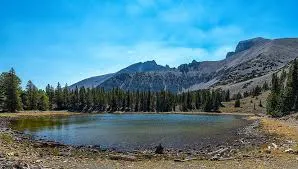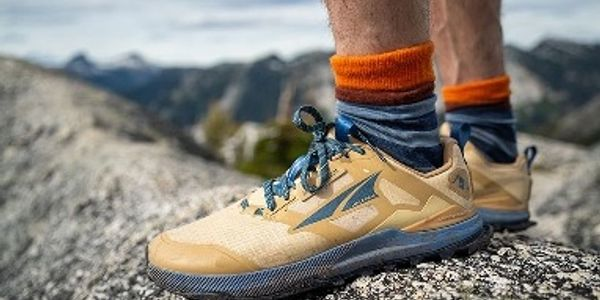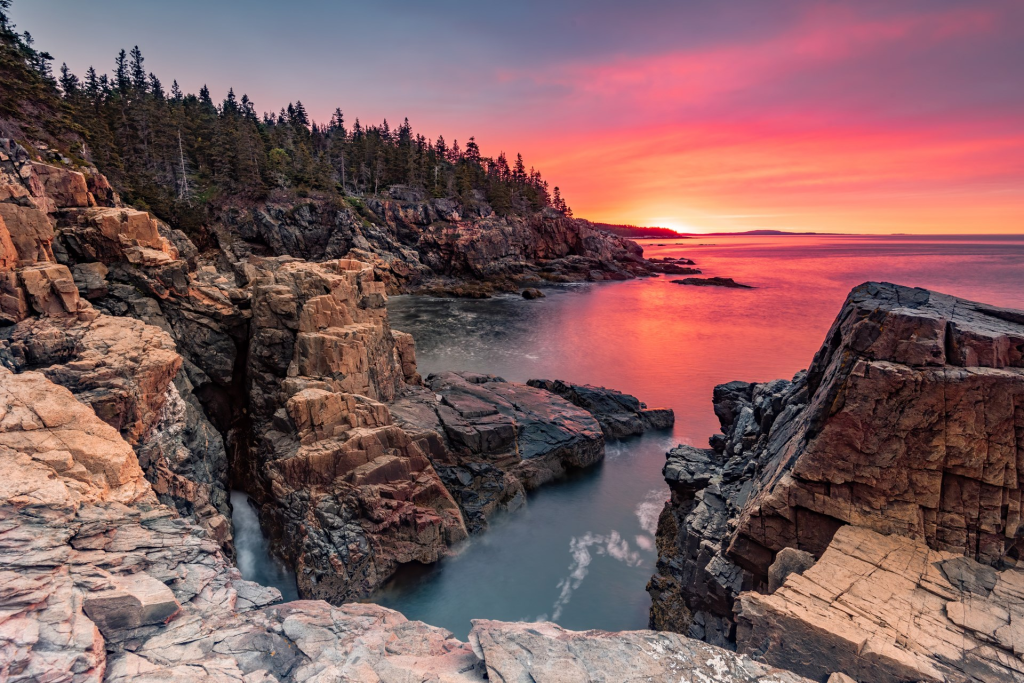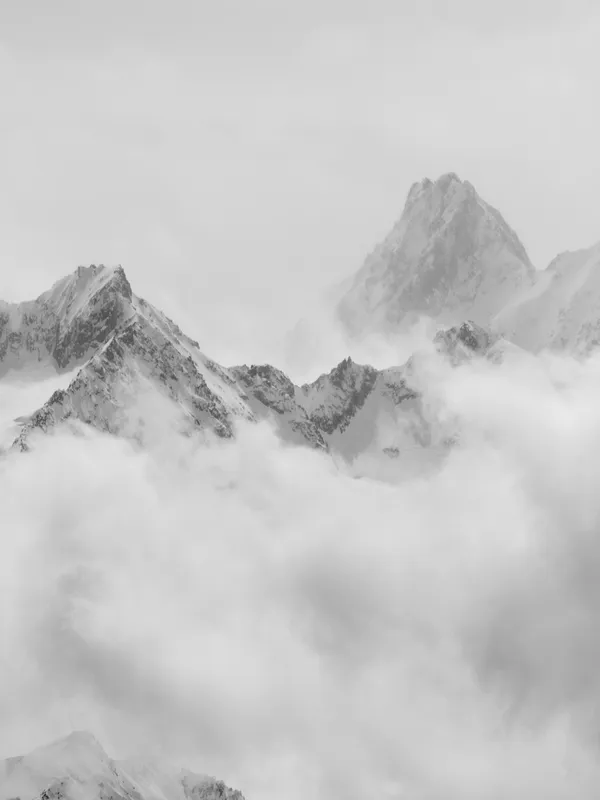Stella Lake Hike: A Backpacking Guide to the Ruby Mountains
By Cap Puckhaber, Reno, Nevada
Nestled within Nevada’s stunning Ruby Mountains, Stella Lake exists as a hidden gem that offers an unforgettable backpacking adventure. Specifically, this picturesque alpine lake is located within the expansive Humboldt-Toiyabe National Forest. The area is consequently known for its clear, blue waters and breathtaking mountain scenery. Whether you are an experienced backpacker or a passionate hiker, the journey to Stella Lake undoubtedly promises a challenging yet rewarding experience.
Navigating the Hike to Stella Lake
The 8-mile round-trip hike to Stella Lake officially begins at the Liberty Pass Trailhead. From there, it guides adventurers through lush alpine forests, across rocky outcroppings, and into wildflower-filled meadows. In total, the trail gains approximately 2,000 feet in elevation. This makes it a strenuous climb; however, the effort is well worth it for the panoramic views.
What to Expect on the Trail
Along the way, hikers can expect diverse terrain that features sections of rocky switchbacks as well as soft forest paths. Furthermore, the route provides breathtaking vistas that overlook the surrounding peaks. Wildlife encounters are also common, providing opportunities to see deer, marmots, and various bird species in their natural habitat. Therefore, always remember to keep a respectful distance and never feed the animals.
Backpacking and Camping Guidelines
For those wanting to extend their trip, backcountry camping near Stella Lake is an excellent option. However, responsible stewardship is critical in this pristine environment. You must choose established campsites whenever possible to minimize environmental impact. Additionally, everyone must follow Leave No Trace principles by packing out all trash. This also means avoiding campfires, as they can be restricted and pose a significant hazard. Instead, plan to use a backpacking stove for all cooking.
Essential Camping Preparations
Proper food storage is another critical component of a safe trip. Consequently, bear-proof food storage is highly recommended to protect both wildlife and your personal supplies. You must also prepare for cold temperatures, even in summer. The alpine elevation means nights are chilly, which requires a warm sleeping bag and insulated gear to ensure a comfortable rest.
Understanding Permits and Regulations
Before you depart, it is essential to understand the local rules. For instance, no permits are required for simple day hikes. On the other hand, overnight camping may require a free wilderness permit. You can typically obtain these permits at local ranger stations. Campfire restrictions are almost always in place, so you should check with the Humboldt-Toiyabe National Forest Service before your trip for the most current updates.
Packing Your Gear Essentials
Packing the right gear directly ensures a safe and enjoyable adventure. First, sturdy hiking boots are essential for handling the rocky and steep terrain. In addition, you must carry reliable navigation tools. A map, compass, or a GPS device will help you stay on track, particularly if you are unfamiliar with the area. Water and filtration are similarly vital. Experts recommend you carry at least 2-3 liters of water and also bring a filter for refilling at natural sources.
Furthermore, your shelter system needs to be appropriate for the conditions. A lightweight backpacking tent and a sleeping bag rated for alpine conditions are necessary. Many hikers also find trekking poles helpful for navigating the steep inclines. For sustenance, pack high-energy snacks like protein bars, trail mix, and dehydrated meals. Finally, a comprehensive emergency kit, including first aid, a headlamp, extra batteries, and a multi-tool, is non-negotiable.
Parking and Trailhead Accessibility
The trailhead is located near the beautiful Lamoille Canyon. This area features a parking lot that fills very quickly, especially during the peak season. For this reason, an early arrival is highly recommended. Arriving early not only secures a parking spot but also helps you avoid the intense midday heat during your ascent. While the road to the trailhead is well-maintained, it can become quite busy on weekends.
Identifying the Best Time to Visit
Timing your visit can significantly impact your experience. Generally, late summer to early fall is the ideal window for this hike. During this period, the trail is typically snow-free and the weather remains mild. Conversely, spring hikes may still encounter significant snow patches at higher elevations, which can make navigation difficult. Winter access is extremely challenging, primarily due to heavy snowfall and limited road accessibility.
Final Thoughts on the Journey
Ultimately, the Stella Lake hike is an incredible way to experience the rugged beauty of Nevada’s Ruby Mountains. Whether you are planning a strenuous day hike or a multi-day backpacking trip, this trail delivers spectacular views and peaceful solitude. It presents rewarding challenges that will test your preparation. So, lace up your boots, double-check your gear, and embark on an unforgettable adventure to Stella Lake.
Frequently Asked Questions (FAQ)
Q: How long and difficult is the hike to Stella Lake?
A: The hike is an 8-mile round-trip that begins at the Liberty Pass Trailhead. It is considered strenuous because it involves a significant 2,000-foot elevation gain, often over rocky terrain.
Q: Do I need a permit to hike or camp at Stella Lake?
A: No permits are required for day hikes. However, if you plan on overnight camping, you may need a free wilderness permit. It is essential to check with the Humboldt-Toiyabe National Forest ranger station for the most current regulations before your trip.
Q: When is the best time of year to visit?
A: The ideal time to hike to Stella Lake is from late summer to early fall. During this period, the trail is typically free of snow and the weather is mild. Hikes in the spring often encounter snow patches at higher elevations, and winter access is extremely challenging.
Q: Is there water available on the trail?
A: Yes, there are natural water sources, but you must treat the water. The guide recommends carrying 2-3 liters of water to start your hike and bringing a water filter to safely refill your supply along the way.
About the author
Cap Puckhaber is a marketing strategist, finance writer, and outdoor enthusiast. He writes across CapPuckhaber.com, TheHikingAdventures.com, SimpleFinanceBlog.com, and BlackDiamondMarketingSolutions.com. Follow him for honest, real-world advice backed by 20+ years of experience.
10 Unforgettable Outdoor Destinations
The Outdoor Enthusiast’s Guide to Stargazing

Join our Mailing List
Sign up with us now and be the first one to know about our exclusive offers and product updates.
By submitting your information, you`re giving us permission to email you. You may unsubscribe at any time.
Follow Cap Puckhaber on Social Media


About the Author: Cap Puckhaber
Backpacker, Marketer, Investor, Blogger, Husband, Dog-Dad, Golfer, Snowboarder
Cap Puckhaber is a marketing strategist, finance writer, and outdoor enthusiast from Reno, Nevada. He writes across CapPuckhaber.com, TheHikingAdventures.com, SimpleFinanceBlog.com, and BlackDiamondMarketingSolutions.com.
Follow him for honest, real-world advice backed by 20+ years of experience.





